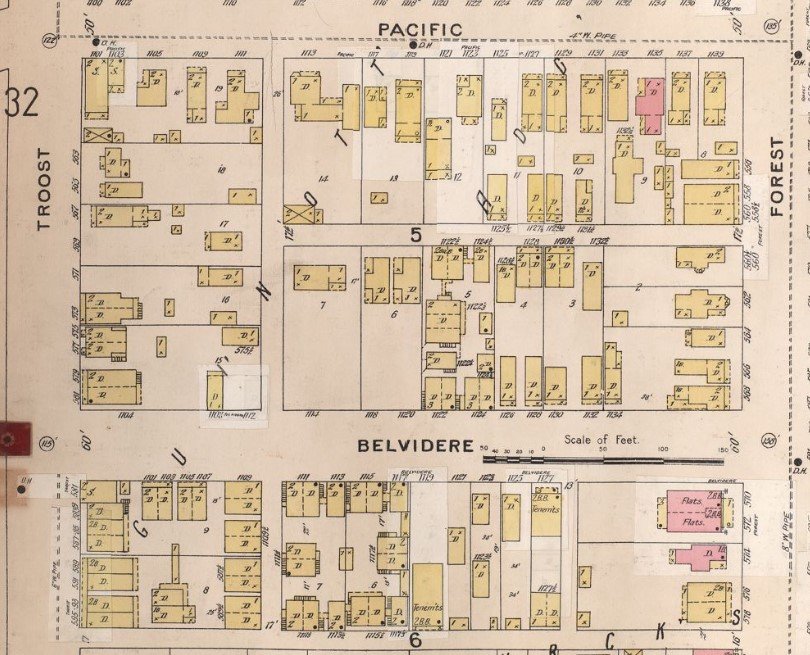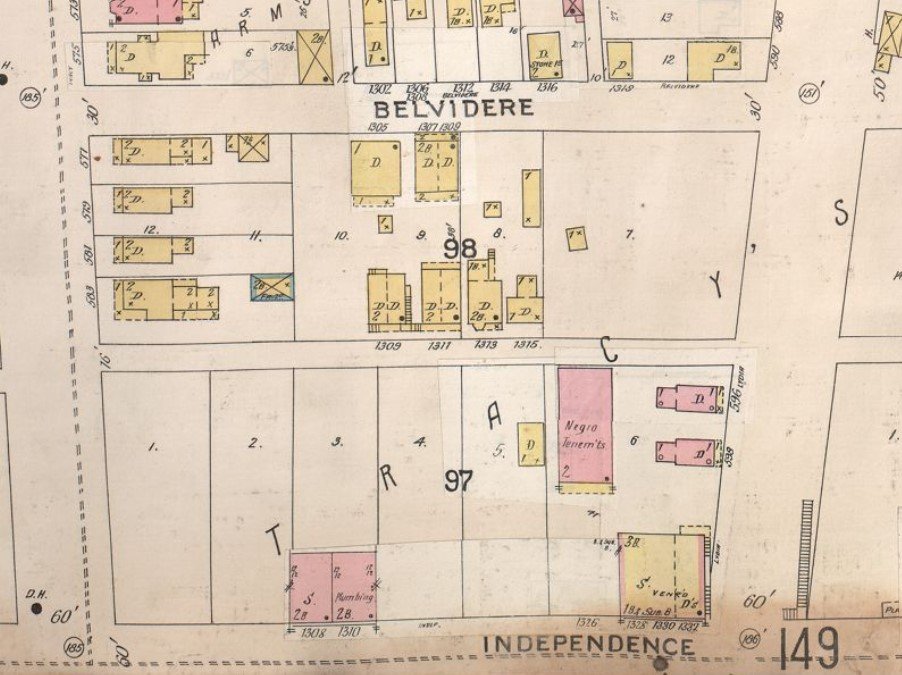
Belvidere Hollow
Belvidere Street and Lydia Avenue
Belvidere Hollow
Admiral to 27th and Troost to Paseo
From the “History of the African Americans in Kansas City” by Sandra Walker, Ph.D.
Beginning the twentieth century in Kansas City from 1876 to 1900, Kansas City was booming. About “Belvedere Hollow,” Walker states that the Belvedere Hollow was a Westport [Landing] enclave.
In “A City Divided” by Sherry Lamb Schirmer, Schirmer reports that Belvidere, along with Hick’s Hollow, developed along two ravines located in a section of the North End, east of the city’s old commercial center. Black residents moved there to escape life in the West Bottoms and Hell’s Half Acre. The location near streetcars was attractive for men and women whose employment required they move often from job to job. Schirmer continues adding that housing in the Hollow was cheap but it was also ramshackle. Only a fifth of the properties were connected to the city’s water mains. As it was in other neighborhoods, having to draw water from cisterns or nearby saloons often meant the water had been contaminated and mortality rates were higher than that of the city as a whole.
Bibliography:
Walker, Sandra, Ph.D. History of the African Americans in Kansas City. Kansas City, Missouri. The Lowell Press. 1993.
Schirmer, Sherry Lamb. A City Divided, The Racial Landscape of Kansas City, 1900-1960. University of Missouri Press. Columbia, Missouri. 2002.
Sanborn Map Company. Kansas City, Jackson, Missouri, Volume 3 1909-1950. Courtesy of the Kansas City Public Library, Missouri Valley Special Collections. kchistory.org




